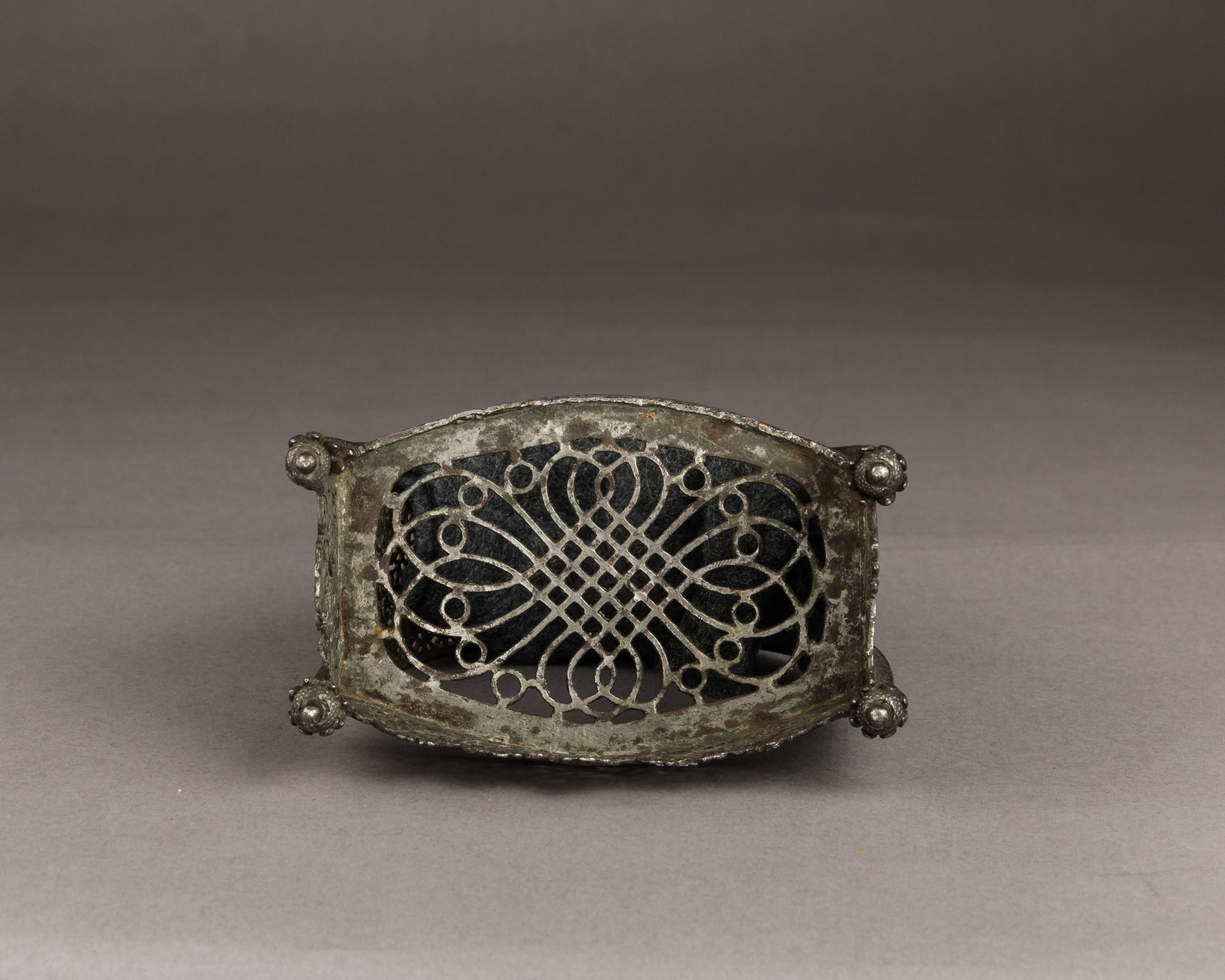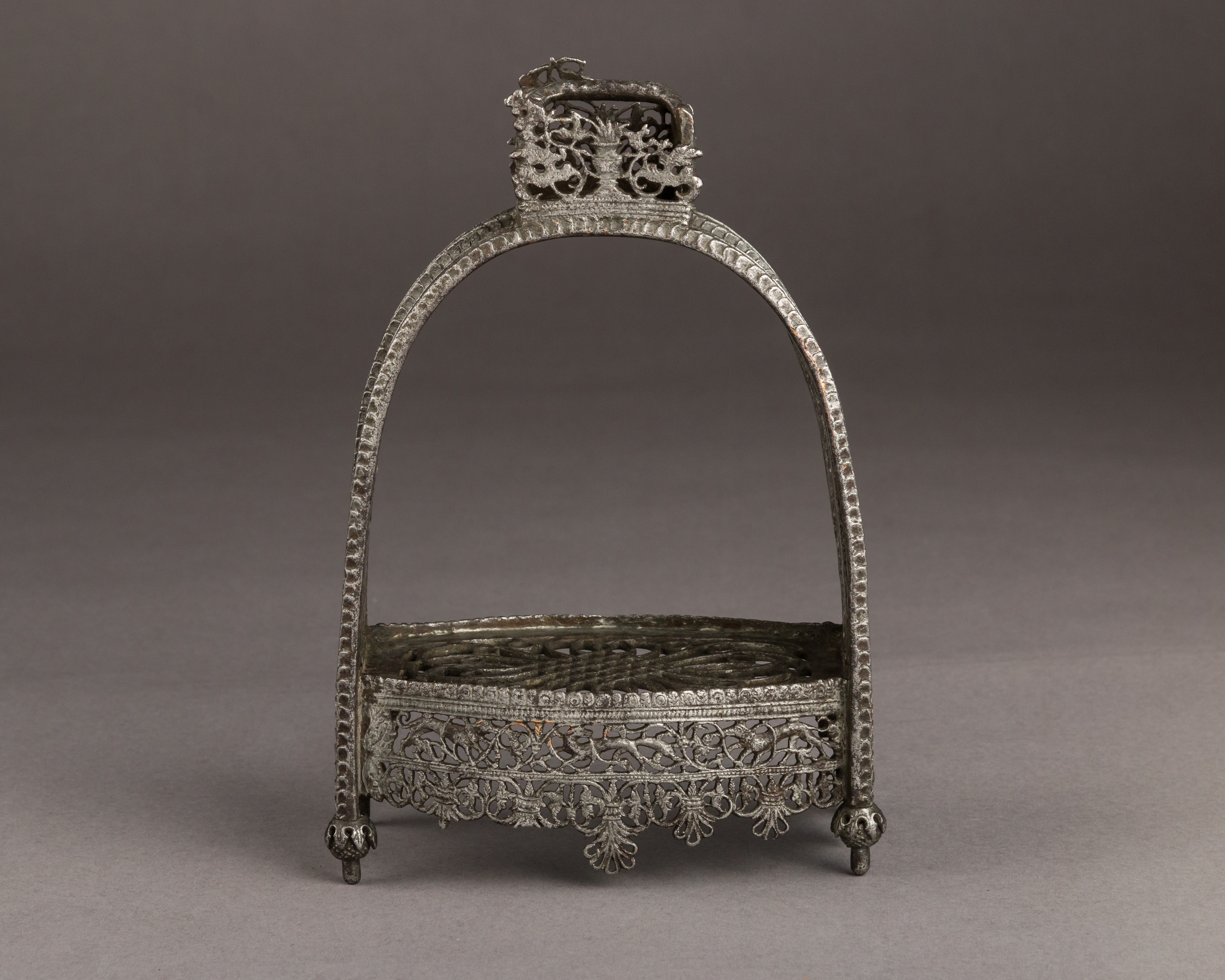Stirrup
Not on view
This luxurious stirrup is entirely adorned with an intricate pierced network of ivy or morning glory vines, as well as geometrical designs. On the remaining edge of the footplate, a fox tries to escape two hounds by hiding among the vegetal scrolls. The footplate itself displays an interlaced knot in openwork, and numerous details have been added by chasing and engraving.
This technique of piercing a very thin plate of metal with very intricate designs, creating a true metallic lacework, is found on deluxe equestrian equipment in Bohemia since the 15th century, as on the spurs and stirrups made in Prague for King Casimir II of Poland ca. 1455 (Vienna, Kunsthistorishes museum). Such quality could only be achieved by the best craftsmen. Ironwork masterpieces like this stirrup, however, were actually so fragile than they would only be used occasionally for ceremonial purposes.
This object should have been made for a wealthy lord in Bohemia (in this case, probably in Prague) or by a Bohemian craftsman active in Bavaria or Saxony, as the four acorns on the stirrup’s ‘feet’ recall contemporary equestrian east German ironwork.
This image cannot be enlarged, viewed at full screen, or downloaded.
This artwork is meant to be viewed from right to left. Scroll left to view more.




